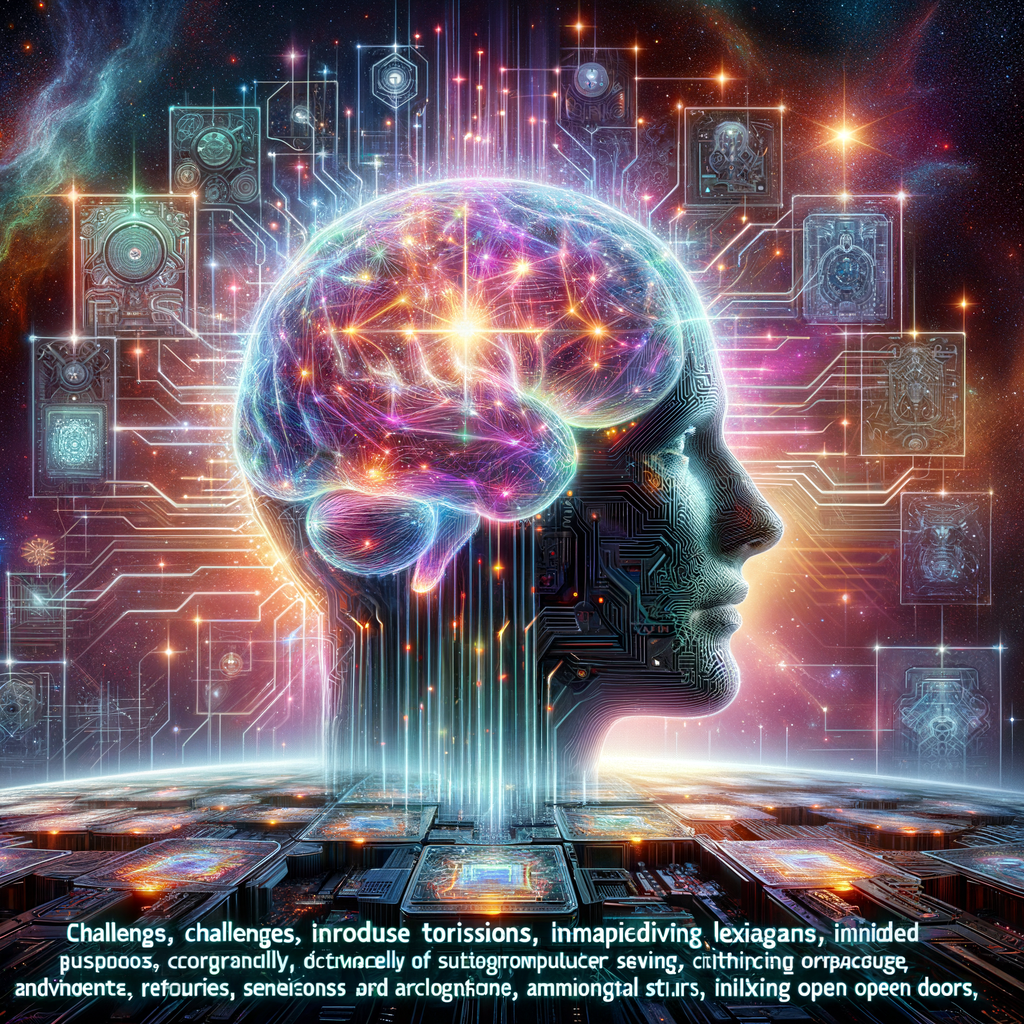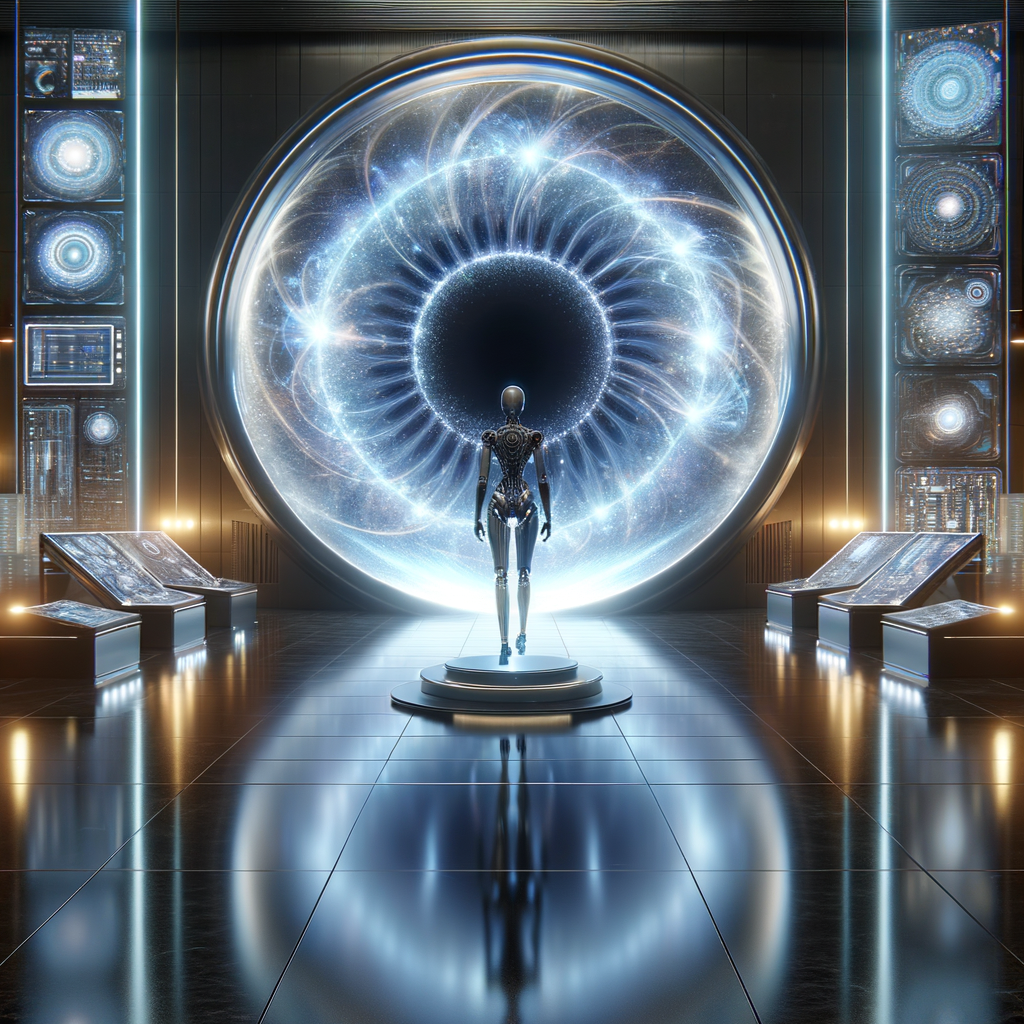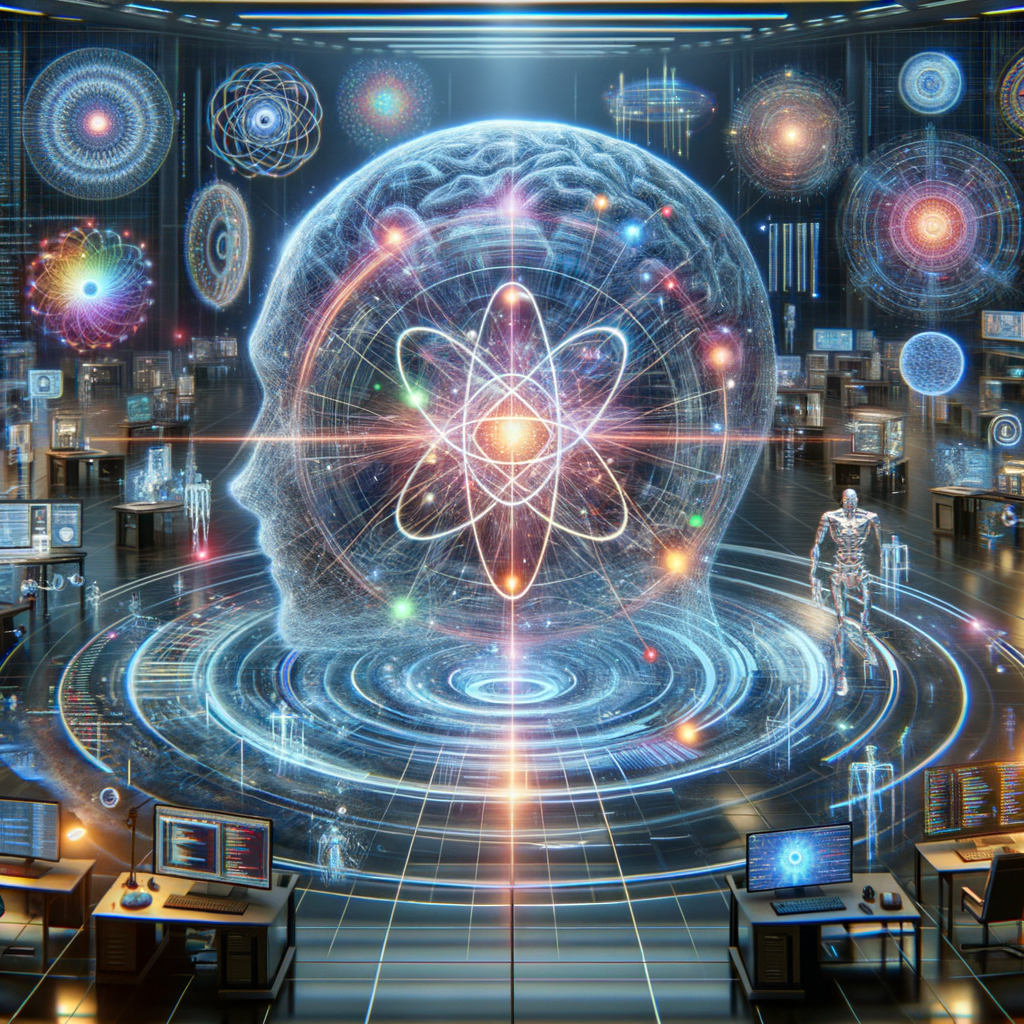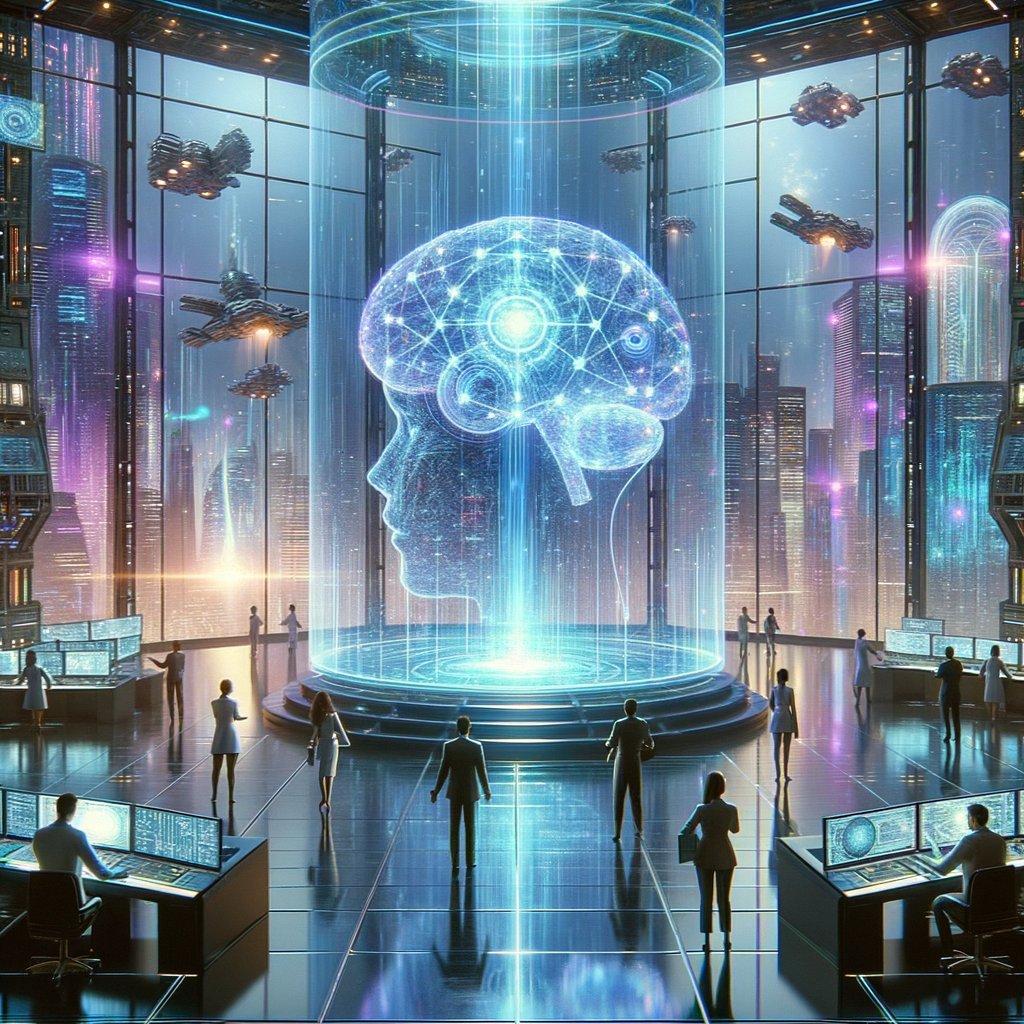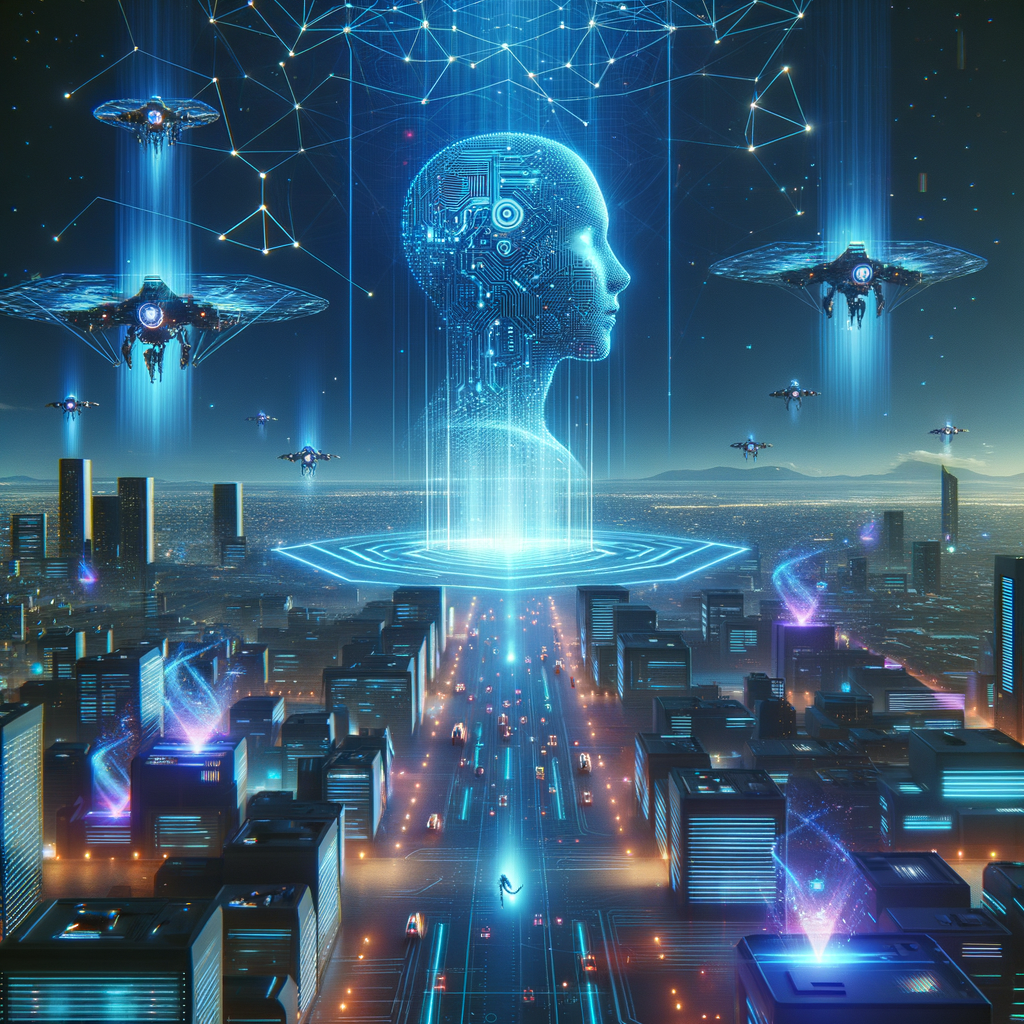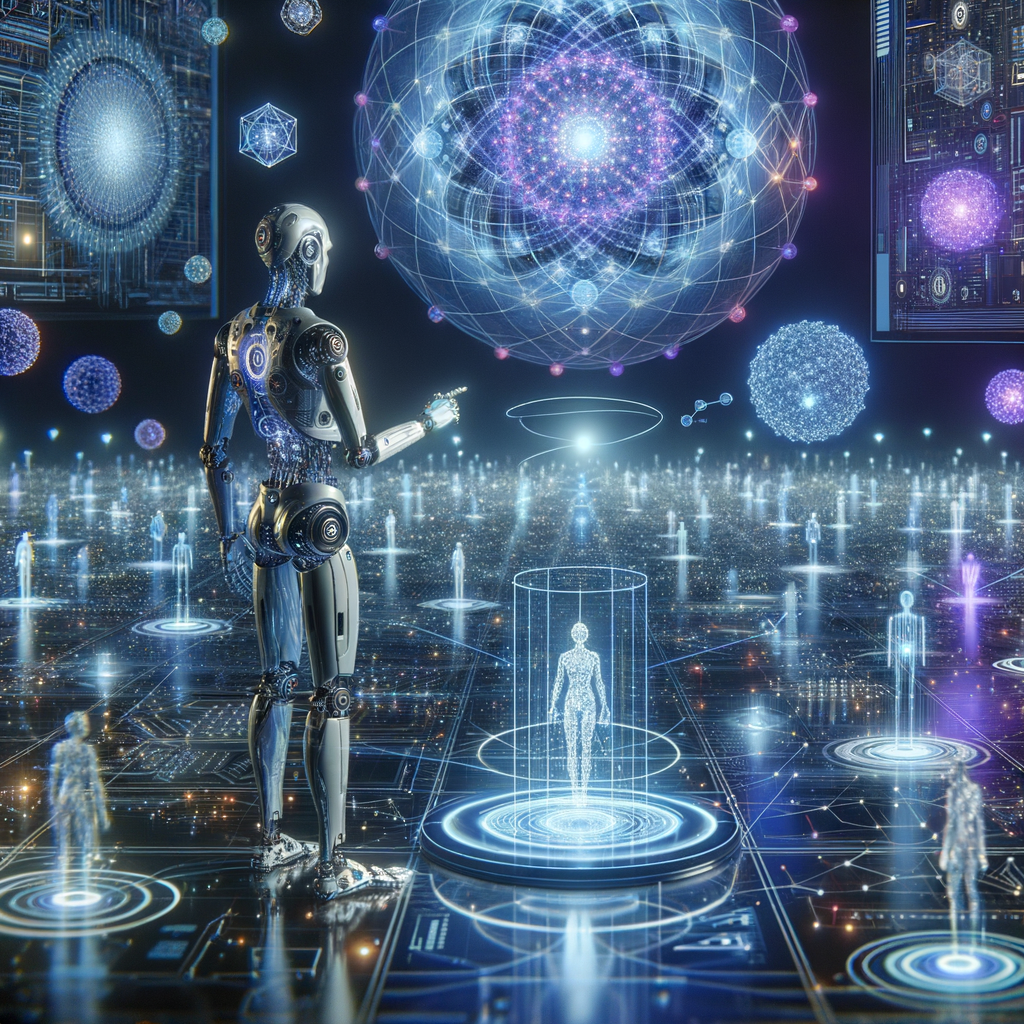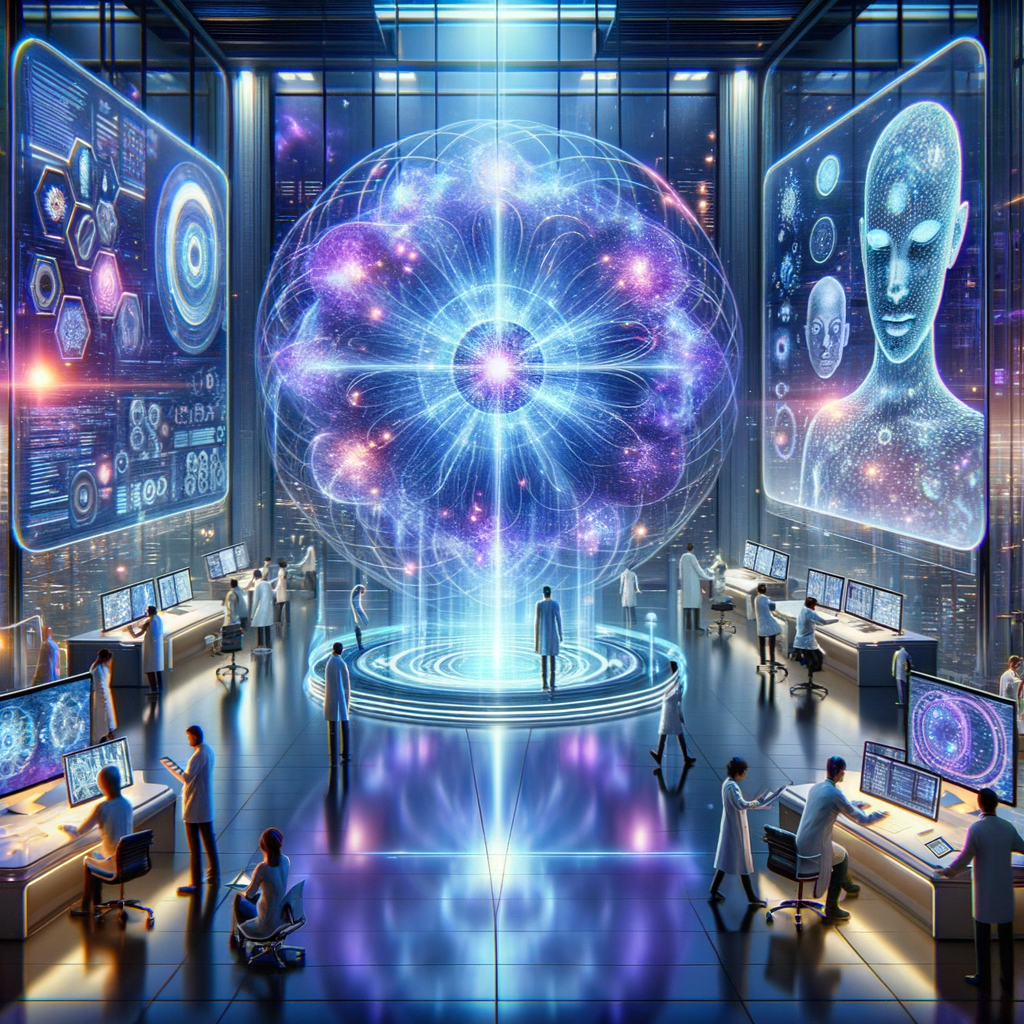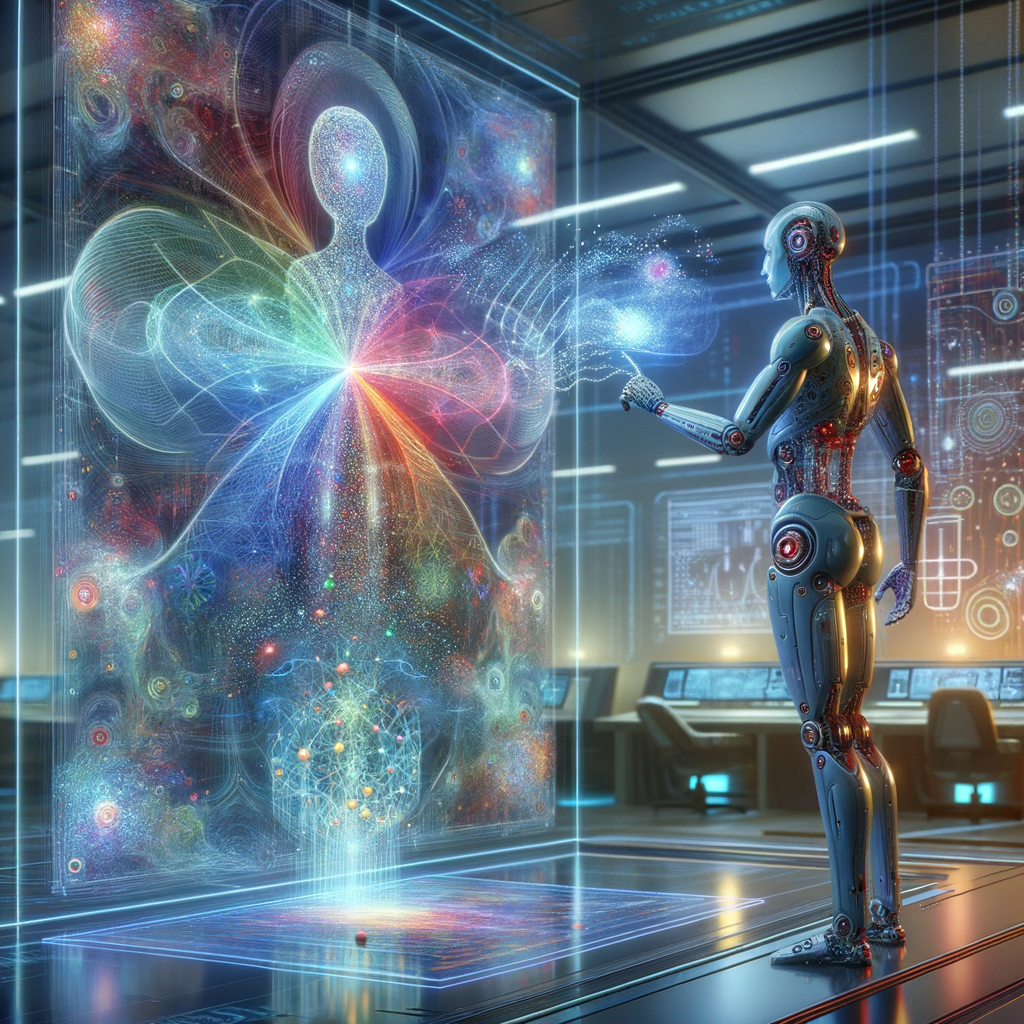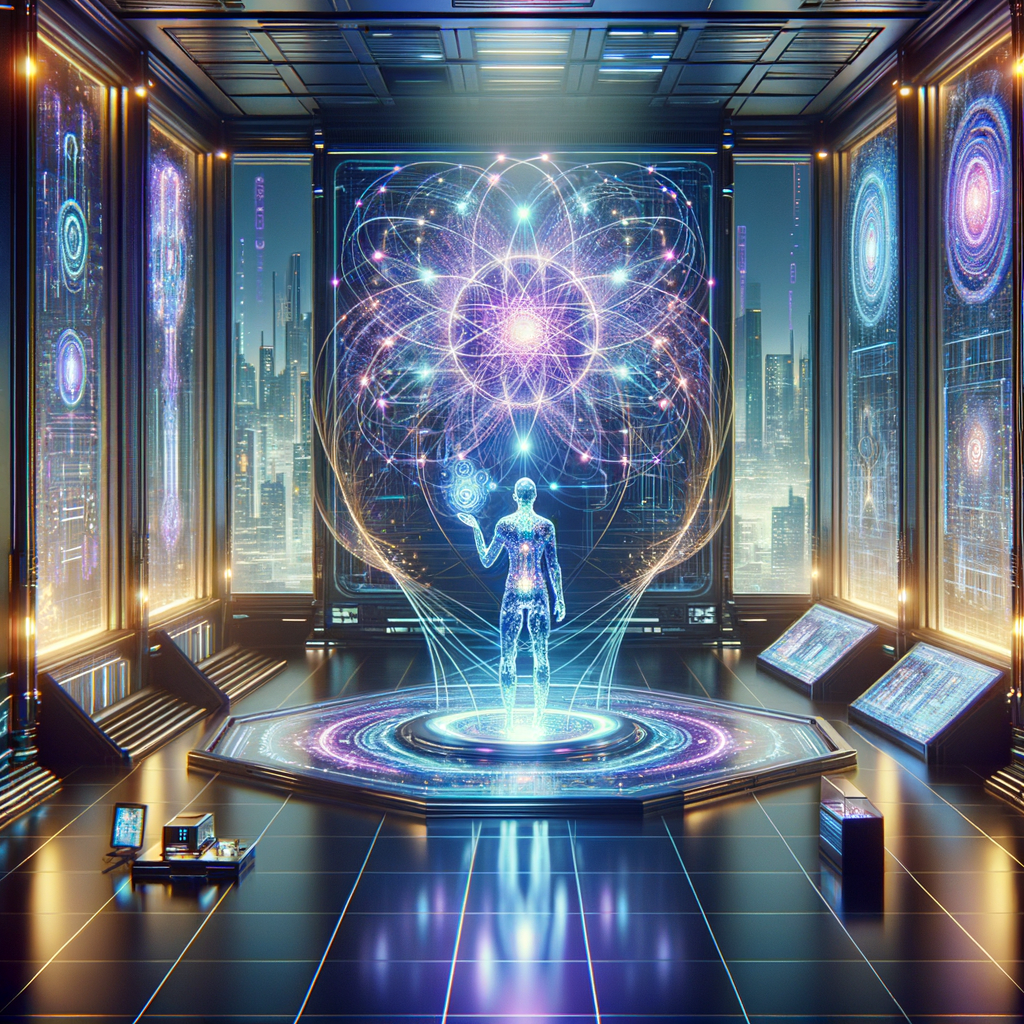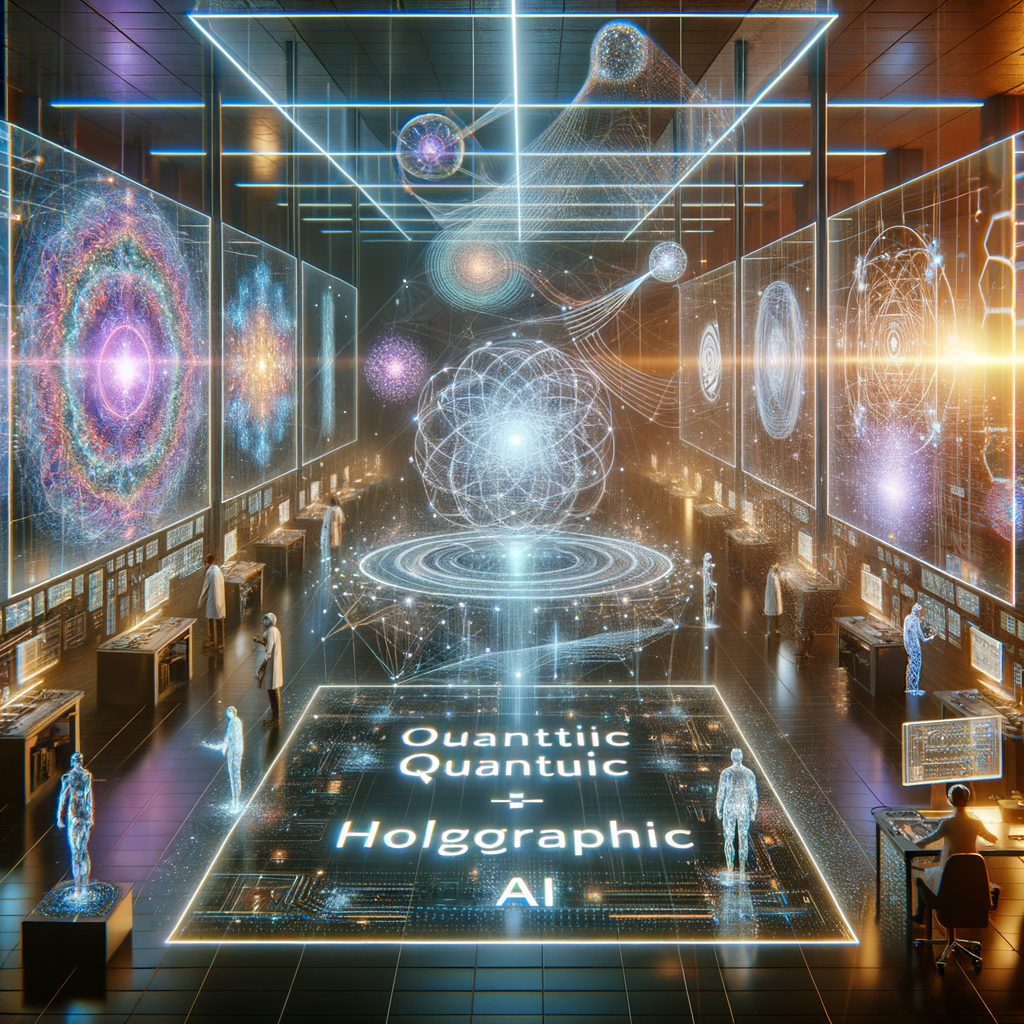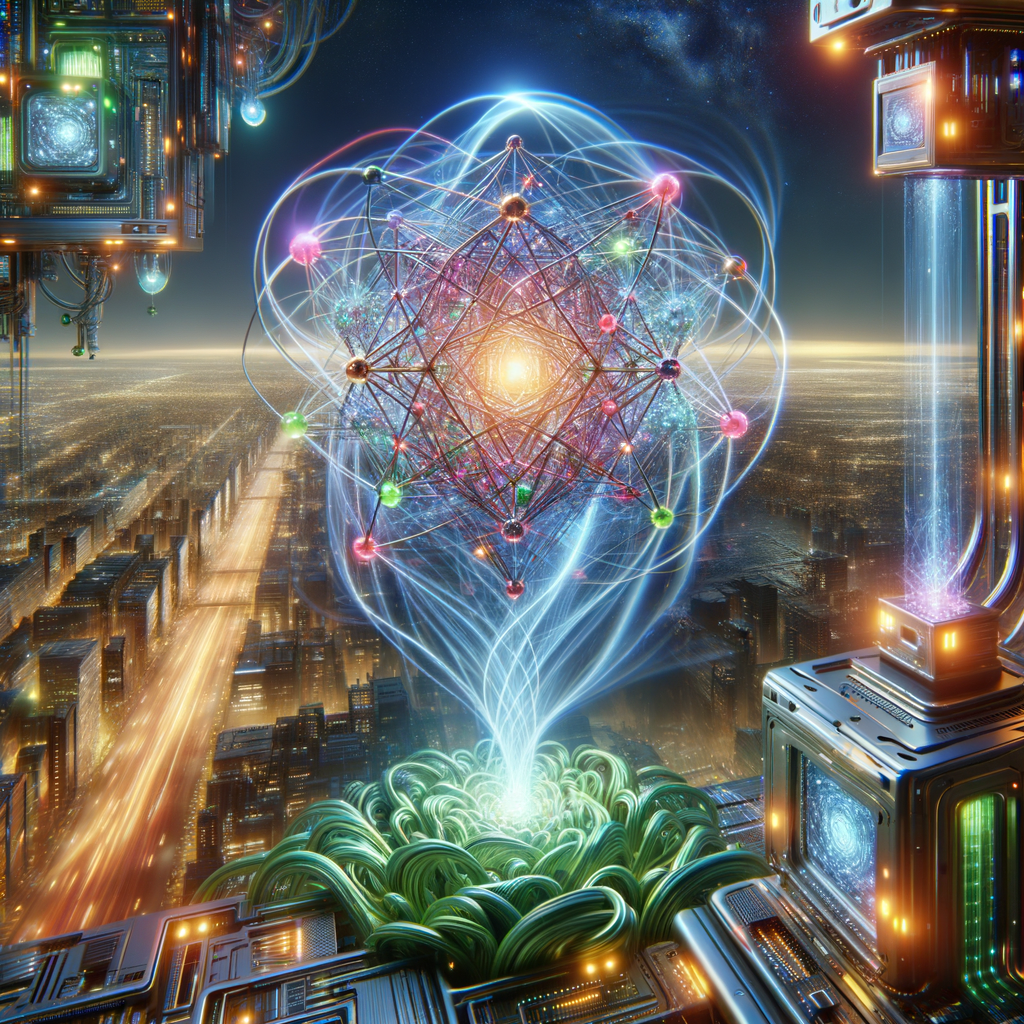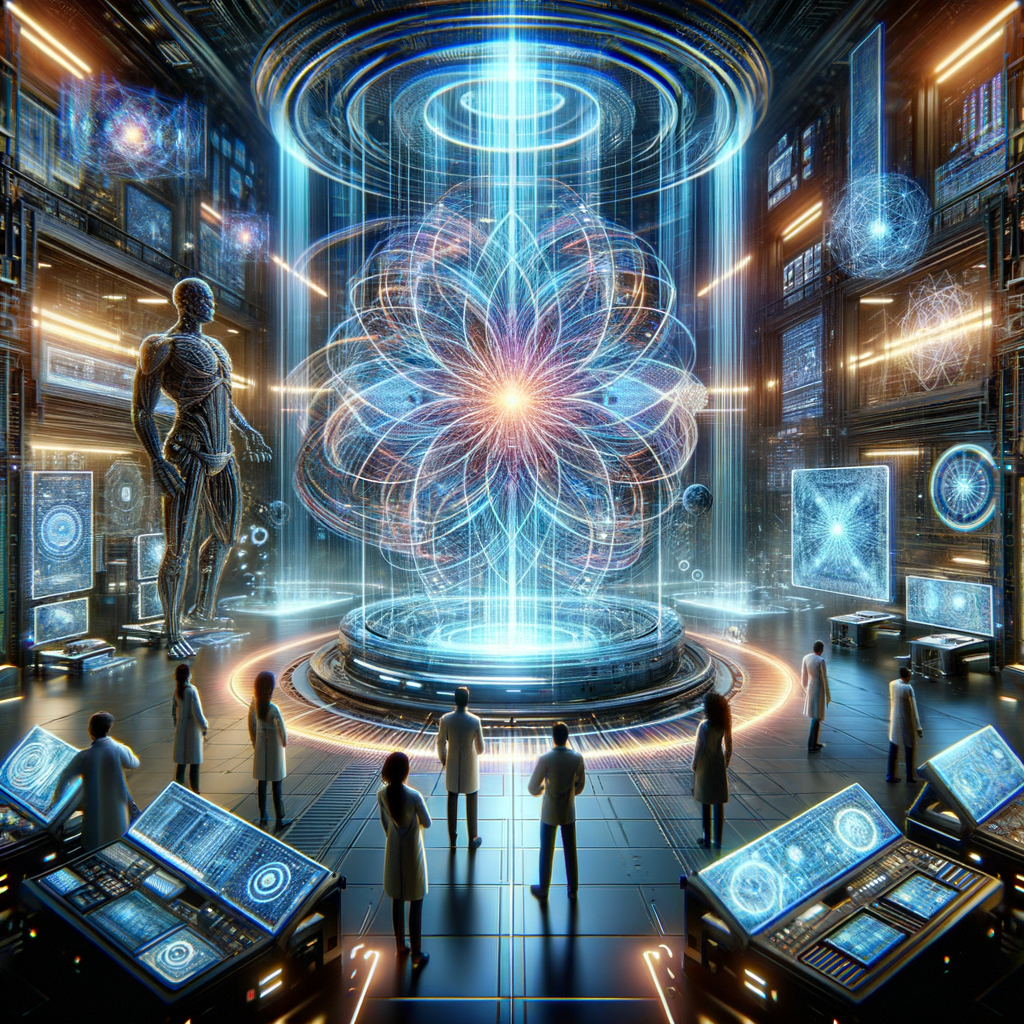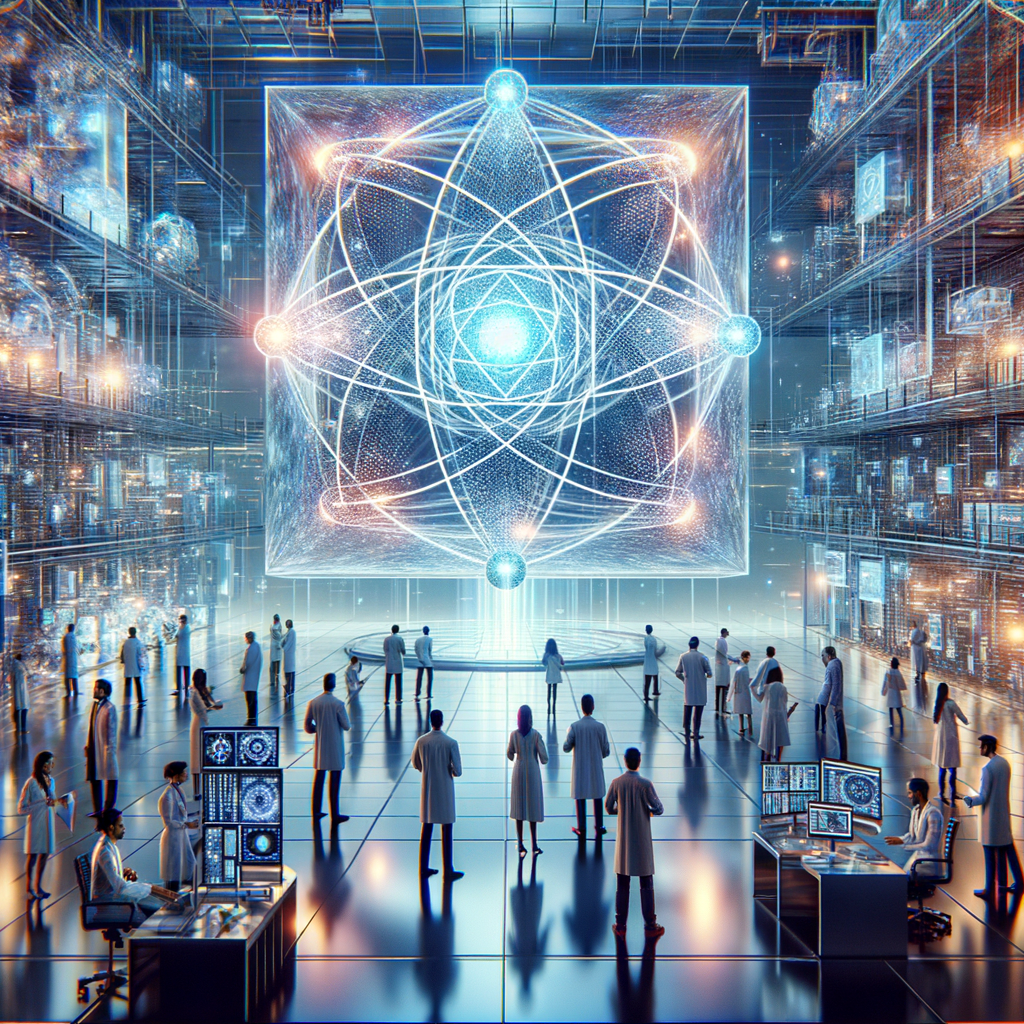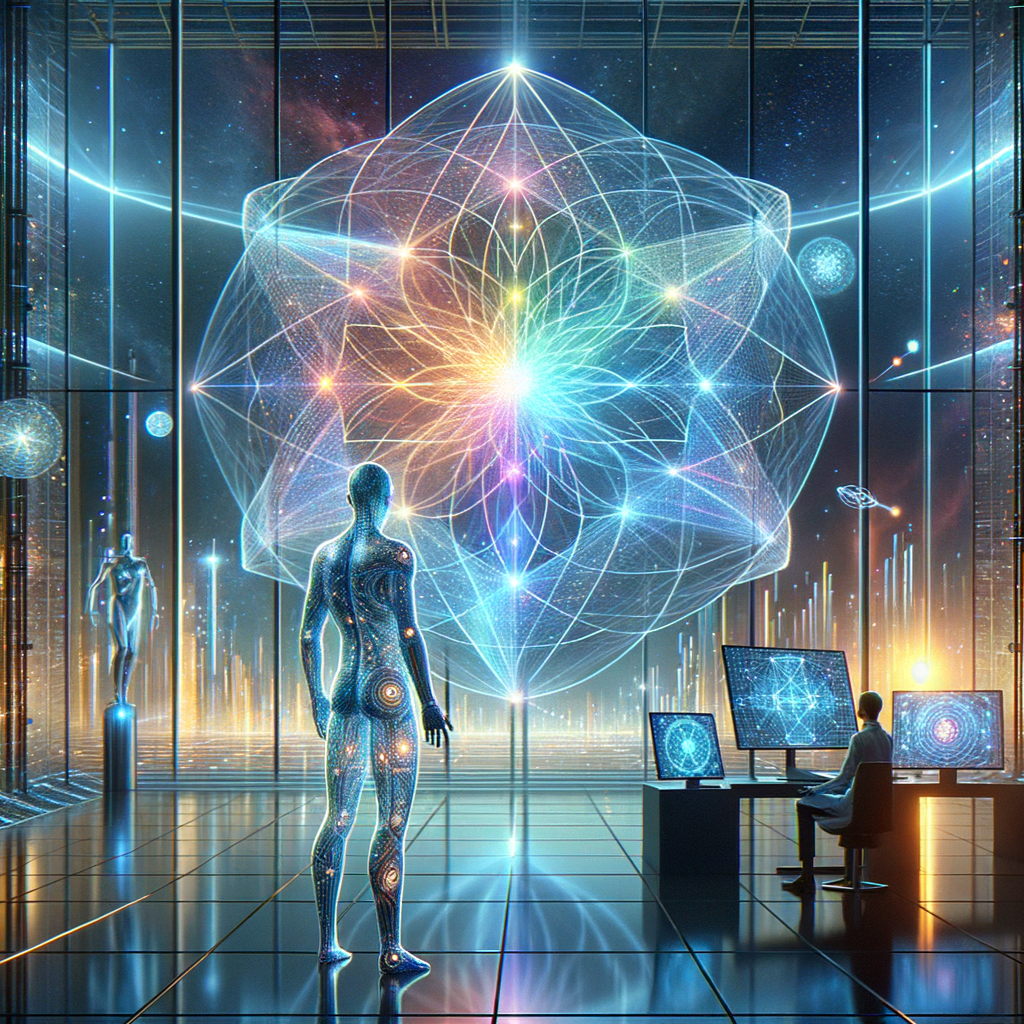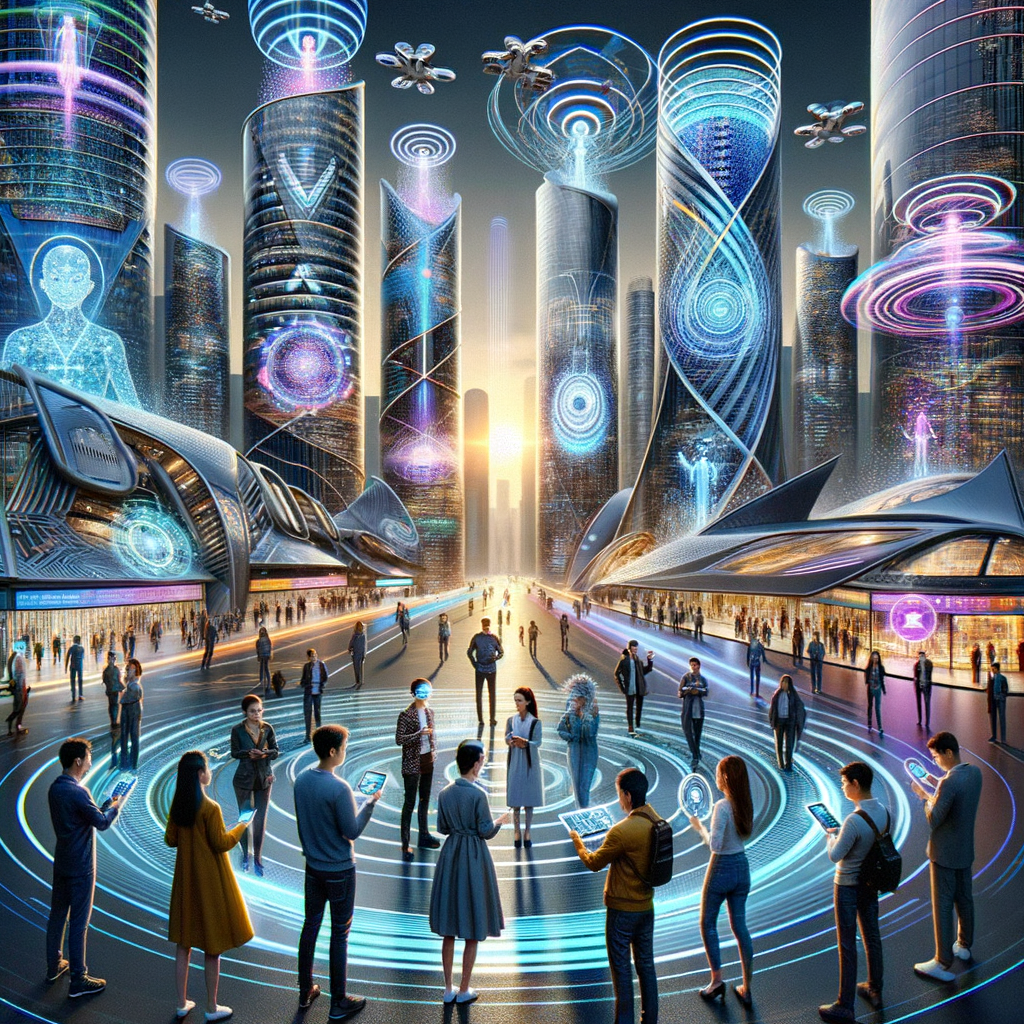 © 2023 / 2024 - QHIQ
© 2023 / 2024 - QHIQThe quantum leap in AI begins with the fundamental building blocks.
Quantic Holographic Artificial Intelligence (QHAI) is revolutionizing the digital landscape by merging quantum computing capabilities with holographic data processing, embarking on a journey beyond the classical computational paradigms. This innovative domain leverages quantum bits or qubits that supersede classical bits by operating in a simultaneous state of zero and one, famously known as superposition. Through entanglement and quantum gate operations, QHAI enables complex data processing at unprecedented speeds. The holographic aspect adds another dimension, literally and figuratively, by enabling the manipulation and interpretation of multi-dimensional data in a virtual holographic space. This integration empowers systems to perceive and interact with environments mirroring advanced human-like cognitive processes.
Advancements are flowering like never before in the quantum and holographic AI space.
Recent advancements in the QHAI sphere include the achievement of higher qubit coherence times, essential for maintaining quantum states during operations. The introduction of error-correcting codes, such as the surface code, has ushered in new reliability standards. Holographically, there has been progress in the development of nanoscale optical circuits which manage photon-based data streams. This integration of quantum technologies with photonic architectures allows for the creation of intricate AI models able to perform tasks such as ultra-fast pattern recognition and natural language processing with significantly enhanced precision. These advancements underscore the potential for QHAI to synthesize and simulate complex environmental dynamics, bar none.
from qiskit import QuantumCircuit
qc = QuantumCircuit(2)
qc.h(0)
qc.cx(0, 1)
# Creating a basic entangled state
Navigating the stormy seas of innovation requires overcoming formidable challenges.
Despite the potential of QHAI, the field is beset with challenges, not least of which is the issue of scalability. Quantum systems require extremely low temperatures to minimize decoherence, necessitating costly cryogenic infrastructure, which is not readily scalable. Additionally, creating a coherent holographic interface capable of real-time interaction with quantum systems is a nuanced technological challenge. Moreover, as a startup in this nascent sector, we face pressures that range from securing venture capital investment to managing intellectual property in an uncharted legal landscape. We must also grapple with recruiting specialists who possess the niche expertise in both holography and quantum computing, all while delivering on R&D and technology transfer deadlines.
Seeing beyond the horizon: The future of QHAI is as vast as it is thrilling.
Looking ahead, the realm of possibilities for QHAI is expansive. Potential applications range from intelligent decision-making systems in autonomous vehicles to predictive health analytics capable of personalizing medicine at the quantum level. In tandem, holographic AI elements could lead to the creation of fully immersive virtual environments for education and training, achieving levels of engagement previously unimaginable. As these platforms advance, ethical considerations regarding privacy, security, and AI sovereignty must be keenly addressed. Moreover, the prospect of achieving quantum advantage in real-time processing continues to galvanize our research initiatives. As the technology continues to evolve, the path leads toward a comprehensive integration of AI that works harmoniously with human intentions.







